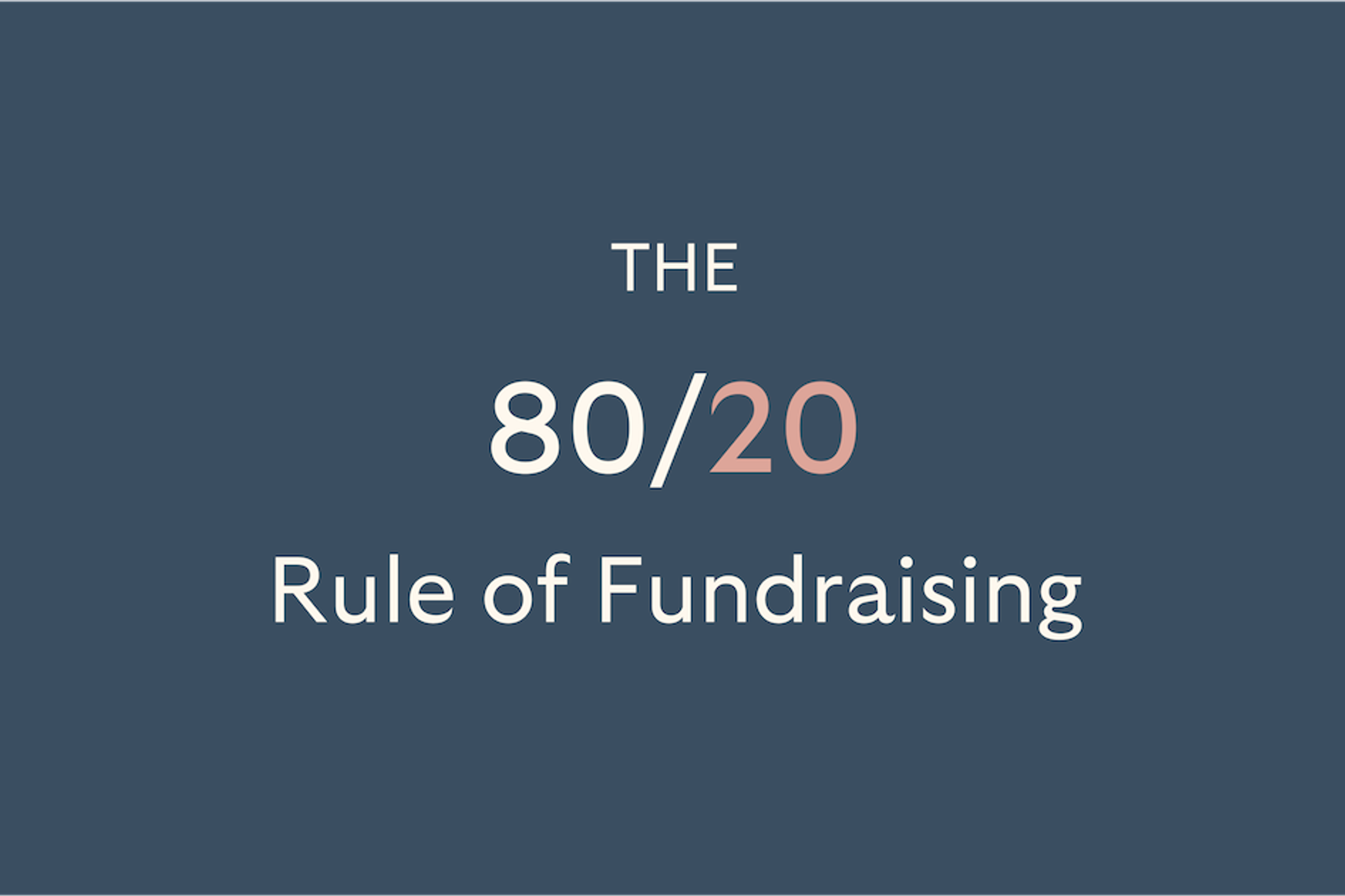Video Integration — boost the buzz around your online fundraising campaign
Time-saving – thoughtful automations save dozens of hours over your campaign
One-Click Checkout — our system will automatically charge the lucky winner
Text Message Notifications — keep your bidders engaged with text message notifications
What is the 80/20 Rule in Fundraising?
By Whit Hunter

What Is the 80/20 Rule in Fundraising?
The 80/20 rule, or the 'Pareto Principle,' is an essential concept in finance. But how does it apply to fundraising?
The 80/20 rule, also known as the Pareto principle, suggests that a small number of causes (20%) often lead to a large number of effects (80%). In the context of fundraising, this principle suggests that a small number of donors (20%) may contribute the majority of funds (80%).
In this blog post, we'll further dig into the concept of the 80/20 rule in fundraising and how you can use it to maximize your fundraising efforts.
Here is a table that explains the 80/20 rule in the context of fundraising:
| Donor Group | Percentage of Donors | Percentage of Funds |
|---|---|---|
| Top 20% of Donors | 20% | 80% |
| Other Donors | 80% | 20% |
This table suggests that the top 20% of donors (those who contribute the most funds) may contribute as much as 80% of the total funds raised. The remaining 80% of donors may contribute only 20% of the funds.
This pattern can help organizations identify and prioritize their most valuable donors and identify potential areas for improvement in their fundraising efforts.
How Can the 80/20 Rule Be Applied in Fundraising?
The 80/20 rule can be applied in fundraising in the following ways:
- Identify and prioritize the top 20% of donors: This can be done by analyzing donor data to determine which donors have provided the most support to the organization in the past. These donors should be given special attention, and efforts should be made to cultivate and maintain strong relationships with them.
- Cultivate and maintain relationships with these top donors: This can include thanking donors for their support, updating them on the organization's work and the impact of their donations, and involving them in decision-making processes.
- Identify and target new potential donors who may fall within the top 20%: This may involve researching and identifying individuals or organizations with the capacity and inclination to support the organization and reaching out to them to solicit their support.
- Allocate resources and time appropriately: Given that the top 20% of donors are expected to provide the majority of funding, it makes sense to allocate a disproportionate amount of resources and time towards cultivating and maintaining relationships with these donors. This may include assigning a dedicated team or individual to manage the organization's relationships with its top donors.
Advantages of Using the 80/20 rule in Fundraising
There are several advantages of using the 80/20 rule in fundraising:
#1 Helps Focus on the Most Impactful Donors
By prioritizing your most important donors, organizations can allocate their resources and time more efficiently and effectively, resulting in a higher return on investment.
#2 Increase Funding
By building solid relationships with the best 20% of donors, organizations can tap into their networks and potentially secure additional funding and support.
These donors are also more likely to make larger donations and to provide ongoing support for the organization.
#3 Provide Insight Into Fundraising Strategies
Analyzing donor data and identifying patterns can help organizations gain valuable insights into what strategies and approaches are most effective in securing support.
This information can inform future fundraising efforts and help organizations fine-tune their approach.
#4 Strengthen the organization's reputation
By demonstrating its ability to secure support from its top donors, the organization can strengthen its reputation as a successful and effective organization, which may attract additional donors and support.
Let us help you raise more! Use BetterWorld’s free, easy fundraising tools!
Disadvantages of Using the 80/20 Rule in Fundraising
There are also several disadvantages of using the 80/20 rule in fundraising:
#1 Risk of Relying Too Heavily on a Small Group of Donors
If an organization relies heavily on its top 20% of donors, it may be vulnerable to financial instability if one or more of these donors decides to reduce or stop their support.
This can be especially problematic if the organization has few other funding sources.
#2 Potential for Neglecting Other Potential Donors
By focusing most of its efforts on the top 20% of donors, an organization may need to pay more attention to other potential donors and sources of funding.
This can limit the organization's ability to diversify its funding base and make it more vulnerable to financial instability.
#3 May Not Be Applicable to All Organizations
The 80/20 rule may not be applicable to all organizations, depending on the size and structure of the organization, the sector in which it operates, and other factors.
It is essential for organizations to carefully analyze their donor data and determine whether the 80/20 rule is relevant to their fundraising efforts.
Final Thoughts
In conclusion, the 80/20 rule is a valuable tool for nonprofit organizations to consider when planning their fundraising efforts.
While the 80/20 rule can lead to increased funding and support for an organization, it is important to be mindful of the potential disadvantages.

Join 100,000+ amazing nonprofits, organizations, and fundraisers on BetterWorld

Let our FREE fundraising tools help you raise more funds with less effort








